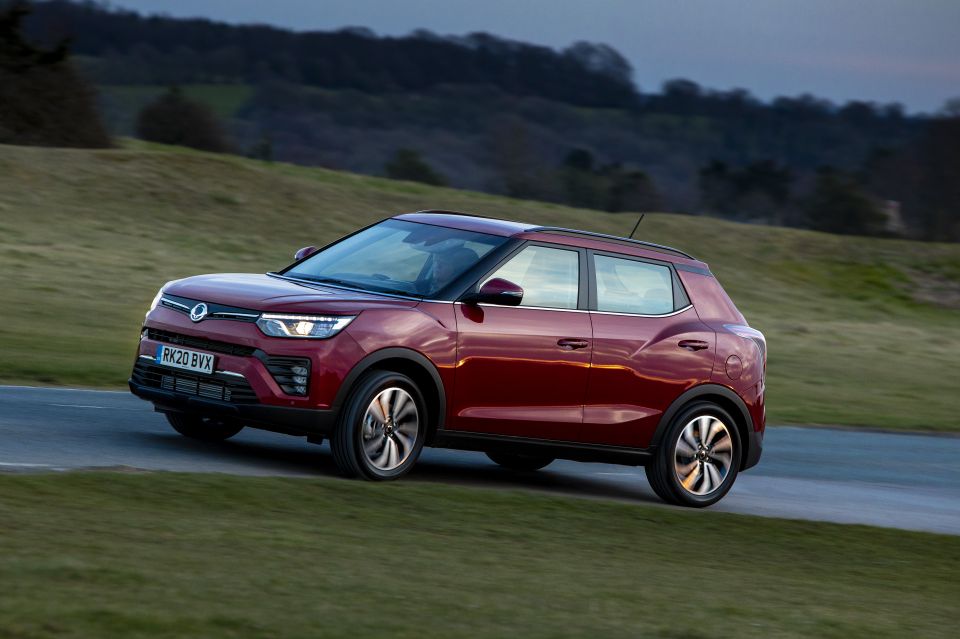

Damion Smy
Nissan Juke EV will use Leaf platform, due in 2026 - report
10 Hours Ago

News Editor
Development of SsangYong’s next generation of SUVs is afoot even as the company’s future gets murkier.
A camouflaged photo of one of SsangYong’s upcoming models, the J100, has been shared on the Clién message board.
The company released sketches of the mid-sized electric SUV earlier in 2021, simultaneously revealing the production Korando E-Motion, SsangYong’s first electric vehicle.

SsangYong has said the J100 will enter production in 2022 and will be followed by a mid-sized electric ute.
The handsome, blocky styling of the J100 is visible through the camouflage, while the front end is mostly unobscured.
We can see the slotted grille, scoop-shaped LED daytime running lights and vertical cutouts for the fog lights have carried over to the production model.

Only one photo has been shared, so we don’t know if the rear will remain faithful to the drawings.
The J100 sketches showed a distinctive wraparound rear window treatment, plus a band of body-colour metal between the C- and D-pillars that intersects with the contrasting colour roof.
Range Rover-esque tail lights and a bulge simulating a spare tyre complete the look.
It’s unclear if the J100 and its ute companion will use a body-on-frame architecture like the Rexton and Musso, or if they’ll employ unibody construction like the Tivoli and Korando.


In addition to the J100, the company has more recently released sketches of an SUV called the KR10, which features bulging fenders and a sliding canvas roof for a rugged-looking style in the vein of a Ford Bronco.
SsangYong calls the five-door SUV a spiritual successor to the Korando – no, not the current crossover, but rather the unusually-styled, body-on-frame three-door SUV that wore the name prior.
The old Korando was a replacement for a vehicle derived from the Jeep CJ-5.
Additionally, SsangYong has recently introduced an updated Rexton, while a facelifted Musso is imminent.

SsangYong is generating publicity for its upcoming models as it looks for a buyer ahead of an end-of-July deadline placed on it by a Korean bankruptcy court.
Parent company Mahindra and Mahindra announced last year it would put ₩40 billion ($50 million) into the South Korean company but, beyond that, it had no more fresh equity to spare.
The Indian company told SsangYong to “find alternate sources of funding”. SsangYong subsequently entered bankruptcy protection late last year.
An American CEO, Duke Hale, had long been in talks to buy up SsangYong from majority owner Mahindra and Mahindra, though they’ve gotten nowhere. The proposal was first mooted under his old company HAAH Automotive Holdings.

With HAAH’s plans to import Chinese cars into the US market having collapsed, Hale is even more enthusiastic about getting its hands on SsangYong.
He’s formed a new company called Cardinal One Motors to take over the process of bidding for SsangYong.
The SsangYong bid is likely to involve raising up to US$350 million (A$480 million), in addition to possible help from Korean financial institutions including the Korean Development Bank. At stake in Korea are about 4500 jobs.
Ssangyong has a tumultuous corporate history. In 1997, Daewoo purchased a controlling stake in the firm.



With Daewoo on the brink of collapse, Ssangyong was hived off in 2000. Four years later Chinese automaker SAIC bought a controlling share.
At the height of the 2009 global financial crisis SAIC cut Ssangyong adrift, amid falling sales, losses, and allegations the Chinese company stole hybrid vehicle technology.
In early 2011, Mahindra and Mahindra beat out competitors such as Renault Samsung to gain a majority shareholding in Ssangyong.
MORE: 2022 SsangYong Korando e-Motion and Concept J100 revealed MORE: Newly-formed American company wants to buy SsangYong
Where expert car reviews meet expert car buying – CarExpert gives you trusted advice, personalised service and real savings on your next new car.
William Stopford is an automotive journalist with a passion for mainstream cars, automotive history and overseas auto markets.


Damion Smy
10 Hours Ago


Damion Smy
13 Hours Ago


Damion Smy
17 Hours Ago


Damion Smy
18 Hours Ago


Damion Smy
18 Hours Ago


Damion Smy
19 Hours Ago